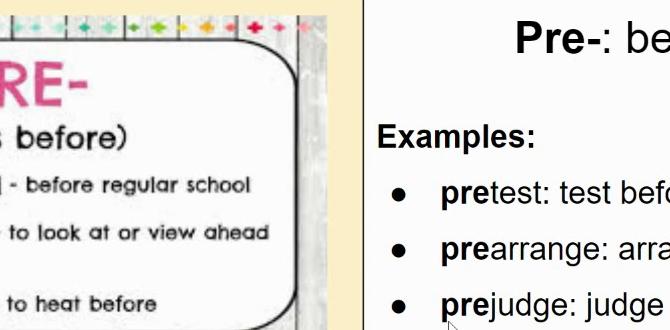Boost your battery’s life and keep your cordless nail gun powered up longer with smart charging habits, efficient tool use, and simple maintenance. Maximize your DIY time and minimize frustrating downtime with these genius tips!
Hey there, fellow DIYer! Jack Shaffer here from Nailerguy. Ever find yourself in the middle of a project, right when things are really humming along, and BAM! Your cordless nail gun’s battery croaks? It’s one of those little frustrations that can really throw a wrench in your plans, especially when you’re just getting into a new project or trying to finish up a weekend build. But don’t you worry, because today we’re diving deep into some practical, easy-to-follow tips to help you get the most out of every charge. We’ll make sure your tools are ready when you are, so you can spend less time waiting and more time building. Stick around, because we’re about to unlock some battery-boosting secrets!
Table of Contents
Why Your Nail Gun Battery Dies Faster Than You’d Like
It’s a common problem, right? You’ve got a brand new battery, or so you think, and it seems to drain faster than a leaky bucket. There are a few sneaky reasons why this happens that most folks don’t even think about. It’s not just about how many nails you fire; it’s also about how you charge, store, and use your batteries, along with the type of nail gun you’re running. Understanding these factors is the first step to solving the puzzle and keeping that power flowing longer.
Genius Tips to Increase Battery Runtime
Let’s get down to business! These tips are designed to be simple and effective, no complex engineering required. They’ll help you squeeze more work out of each charge and keep your cordless nailers running like champs.
1. Master the Art of Smart Charging
Charging your battery correctly is probably the single biggest factor in its long-term performance and how long it’ll hold a charge during use. It’s not just about plugging it in when it’s dead; there’s a little more nuance to it.
Avoid Full Discharges: Lithium-ion batteries, which are common in cordless tools today, don’t like being drained completely. Regularly running them down to zero can shorten their lifespan and reduce their capacity over time. Try to charge them up when you notice the power starting to dip, rather than waiting for them to die.
Don’t Overcharge: Most modern chargers have smart technology that stops charging once the battery is full. However, it’s still a good practice not to leave a fully charged battery sitting on the charger for days on end. Once that light turns green or indicates a full charge, it’s usually best to remove it.
Charge in Moderate Temperatures: Extreme heat or cold can be tough on batteries. If your battery or charger has been sitting in a very hot garage or a freezing shed, let it come to room temperature for a bit before charging. This helps protect the internal components.
Use the Right Charger: Always use the charger that came with your tool or an official replacement from the manufacturer. Different brands and battery types have different charging needs, and using the wrong charger can damage the battery. For more on battery care, check out resources from the U.S. Department of Energy.
2. Optimize Your Nail Gun’s Air System (Even Cordless Models!)
This might sound counterintuitive for a cordless tool, but many modern cordless nail guns operate using a battery-powered motor that compresses air internally. Just like a gas-powered compressor, how efficiently this air system works can affect how much power it draws.
Keep the Air Ports Clear: On your nail gun, there are typically small air vents or ports. Make sure these are clear of sawdust, debris, or any gunk. Blocked ports can make the motor work harder to do its job. A quick blast with compressed air (from a separate source if you have one, or even just a good shake and brush) can help.
Lubricate According to Manufacturer Specs: Some pneumatic tool manufacturers recommend specific lubricants for the internal air mechanisms that the battery-powered motor is driving. Refer to your nail gun’s manual to see if and how often lubrication is recommended. Over-lubricating or using the wrong type can actually hinder performance and drain the battery faster.
Check for Leaks (Internal): While you won’t have external air leaks like with a compressor hose, sometimes internal seals can develop issues. If your nail gun feels like it’s losing air pressure internally (you might hear a faint hiss when it’s not firing), it can cause the motor to cycle more often, draining the battery. This might require a deeper clean or a visit to a repair shop.
3. Adjust Your Nail Gun Settings for Efficiency
Your nail gun has adjustable settings for a reason! Using them wisely can prevent wasted power and unnecessary strain on the battery.
Dial in Depth Adjustment: Too many people set their nail depth too deep for the material they’re working with. This forces the tool to put in extra effort to drive the nail further than needed. Take the time to properly adjust the depth setting for each job. You want the nail head flush or slightly countersunk, not buried deep in the wood. This prevents overdriving, which uses more battery power.
Single Sequential vs. Contact Actuation: Understand when to use each mode. For precise placement, single sequential firing is best. But if you’re doing a lot of fastening work where speed is more important (like framing or attaching subflooring), contact actuation (bump firing) can be more efficient if used correctly. However, be mindful that rapid-fire bumping can still drain batteries quickly. Use the mode that best suits the task at hand to avoid wasting shots and battery life.
Clear Jams Quickly and Safely: A jammed nail gun is a battery killer because the motor is trying to fire while the mechanism is obstructed. Learn how to safely clear jams immediately. Don’t repeatedly try to fire a jammed gun; this just strains the motor and drains the battery. Refer to your manual for safe jam-clearing procedures.
4. Store Batteries Properly for Longevity
How you store your batteries when they’re not in use makes a big difference in their overall health and how well they hold a charge over time.
Cool, Dry Place: The ideal storage location for batteries is a cool, dry environment, away from direct sunlight and extreme temperatures. A workbench in your garage or a dedicated tool cabinet is usually a good spot. Avoid leaving them in your car, especially during hot or cold weather.
Avoid Metal Objects: Store batteries in a way that prevents their terminals from coming into contact with other metal objects like screws, nails, or tools. This can cause a short circuit, which is not only dangerous but will also drain the battery rapidly and potentially damage it permanently. Many tool manufacturers offer battery cases or organizers for safe storage.
Partial Charge is Okay: As mentioned earlier, lithium-ion batteries don’t need to be fully charged or fully depleted for storage. If you’re storing a battery for an extended period (months), it’s often recommended to leave it with a partial charge (around 40-60%). This can help reduce degradation.
5. Choose the Right Battery for the Job
Not all batteries are created equal, and sometimes the size or capacity of the battery you’re using can impact your runtime.
Larger Capacity = Longer Runtime: Batteries are rated in Amp-hours (Ah). A higher Ah rating generally means a larger capacity and thus longer runtime. If you find yourself constantly running out of power on big jobs, consider investing in a higher Ah battery pack for your nail gun. While they might be heavier or bulkier, the increased runtime can be well worth it.
Consider Battery Types: While lithium-ion is standard, older tools might have NiCad or NiMH batteries. Newer lithium-ion batteries are generally lighter, hold a charge better, and offer more power. If you’re still on older battery technology, upgrading to a newer compatible lithium-ion battery can significantly improve your tool’s performance and runtime.
6. Maintain Your Nail Gun Itself
A well-maintained tool is an efficient tool, and an efficient tool uses less power. It’s that simple!
This might seem obvious, but keeping your nail gun clean and in good working order is crucial. Sawdust and debris can impede moving parts, forcing the motor to work harder. Regularly wipe down your tool, clear out any build-up in the magazine, and ensure the driver blade is clean and moves freely.
Regular Inspection: Look for any obvious damage to the tool’s housing, the battery contacts, or the charging port. Damaged components can lead to inefficient operation or cause the battery to not seat properly, affecting power delivery.
7. Consider the Type of Fasteners You’re Driving
The task itself can impact battery demand.
Nail Size and Material: Driving longer, thicker nails, or nails into dense hardwoods, requires more power than driving short, thin nails into soft pine. If you’re consistently working with tough materials or large fasteners, you’ll naturally see a quicker drain on your battery. Plan for this by having spare charged batteries on hand.
Driving Depth Consistency: As mentioned before, consistent and appropriate depth setting is key. Overdriving nails, especially in harder woods, consumes significantly more energy.
8. Battery Health Monitoring Tools
Some high-end tool brands offer ways to monitor battery health. While this might be more advanced than beginner territory, it’s worth knowing.
Manufacturer Apps: A few brands integrate with smartphone apps that can provide diagnostics on battery life, charge cycles, and estimated remaining capacity. If your tool brand offers this, it’s a great way to keep an eye on your batteries’ condition and know when they might be nearing the end of their useful life. This can help you manage your battery inventory proactively.
Real-World Scenarios and Battery Runtime
Let’s look at how these tips play out in a couple of common DIY situations.
Scenario 1: Building a Deck with a Cordless Framing Nailer
You’re framing a deck, a big job! You’ve got your cordless framing nailer and a couple of batteries.
Smart Charging Start: Ideally, you started with at least two batteries fully charged and at room temperature.
Efficiency in Action: You’ve set your depth perfectly for 2×6 joists and rim joists. You’re using contact actuation for speed but are mindful not to ‘ride’ the trigger unnecessarily. After a few hours, Battery A is down to its last bar.
The Swap: Instead of pushing Battery A to its death, you swap to the fully charged Battery B. You then place Battery A on its charger.
Storage: When you take a lunch break, you keep batteries out of the direct sun. Later, you notice a battery left in the truck is quite warm, so you bring it inside to cool before charging.
Outcome: By managing your batteries proactively, you likely completed your day’s framing with minimal downtime, thanks to smarter charging and efficient tool use.
Scenario 2: Trim Work with a Cordless Finish Nailer
You’re installing baseboards and crown molding, precise work requiring a finish nailer.
Setting is Key: You’ve taken the time to adjust the depth so the 16-gauge nails are perfectly set, not overdriven into the delicate pine trim.
Careful Firing: You’re mostly using single sequential firing for accuracy. You notice you’ve accidentally fired one nail into a scrap piece, but you quickly switch back to the workpiece without wasting more shots.
Battery Management: You have one battery, but you keep an eye on the indicator. When it gets to about 30% capacity, you take a short break to let it charge while you clean up some sawdust from the flooring.
Outcome: Even with a single battery, careful tool use means you’re not constantly waiting for a charge, and you’ve saved wear and tear on the battery by not letting it fully deplete.
Let’s look at how different battery capacities can translate to estimated runtime, keeping in mind this is a general guide and actual performance varies.
<table>
<caption>Estimated Nail Gun Runtime by Battery Capacity</caption>
<thead>
<tr>
<th>Battery Capacity (Ah)</th>
<th>Approximate Number of Nails Fired per Charge (Estimate)</th>
<th>Target Application</th>
</tr>
</thead>
<tbody>
<tr>
<td>1.5 Ah</td>
<td>200 – 400</td>
<td>Light trim work, occasional repairs</td>
</tr>
<tr>
<td>2.0 Ah</td>
<td>300 – 600</td>
<td>Standard trim, DIY projects, furniture making</td>
</tr>
<tr>
<td>4.0 Ah</td>
<td>600 – 1200</td>
<td>Continuous trim, cabinetry, light framing</td>
</tr>
<tr>
<td>5.0 Ah+</td>
<td>1000+</td>
<td>Heavy framing, deck building, professional use</td>
</tr>
</tbody>
</table>
Note: These are rough estimates. Actual runtime depends heavily on the nail gun model, type of nails, material density, depth settings, and user technique.*
Frequently Asked Questions (FAQ)
Here are some common questions beginners have about keeping their batteries working their best.
Q1: How often should I charge my cordless nail gun battery?
A1: It’s best to charge it when you notice the power is getting low, rather than waiting for it to die completely. For lithium-ion batteries, charging them when they’re around 20-30% capacity is a good habit. Don’t leave them on the charger indefinitely once they’re full.
Q2: Can I use a battery from another brand in my nail gun?
A2: Generally, no. You should always use the battery and charger specifically designed for your nail gun’s brand and model. Non-compatible batteries can cause damage or be a safety hazard.
Q3: My battery seems to die really fast. Is it broken?
A3: Not necessarily! It could be due to how you’re using the tool (e.g., overdriving nails, frequent jams), storage conditions, or its age. If you’ve tried these tips and it’s still draining unusually fast, the battery might be worn out and need replacing.
Q4: Should I store my batteries indoors or outdoors?
A4: Always store batteries in a cool, dry place, away from extreme temperatures and direct sunlight. Indoors, in a climate-controlled area, is usually best. Avoid leaving them in a car, shed, or garage that experiences significant temperature fluctuations.
Q5: What’s the best way to clean battery terminals?
A5: If you notice any dirt or corrosion on the battery terminals, gently clean them with a dry, clean cloth or a pencil eraser. For tougher grime, a cotton swab lightly dampened with isopropyl alcohol can work, but ensure the battery and terminals are completely dry before use.
Q6: How long do cordless nail gun batteries typically last?
A6: With proper care and consistent use, a good quality lithium-ion battery can last anywhere from 3 to 5 years, or for several hundred charge cycles. Factors like usage intensity, charging habits, and environmental conditions play a big role in their lifespan.
Q7: If I’m not using my nail gun for a month, should I charge the battery?
A7: For long-term storage, it’s generally recommended to leave lithium-ion batteries with a partial charge, around 40-60%. So, if the battery is fully charged or nearly depleted, it’s a good idea to bring it to that partial charge level before putting it away for an extended period.
The Power of Prevention and Smart Habits
So there you have it – a comprehensive guide to getting the most out of your cordless nail gun batteries. It’s really about a combination of smart charging, careful tool usage, and good storage habits. None of these tips are revolutionary, but when you put them all together, they make a significant difference. Think of it like taking care of any good tool; a little attention goes a long way.
By following these steps, you’re not just extending your battery’s runtime for today’s project; you’re also





